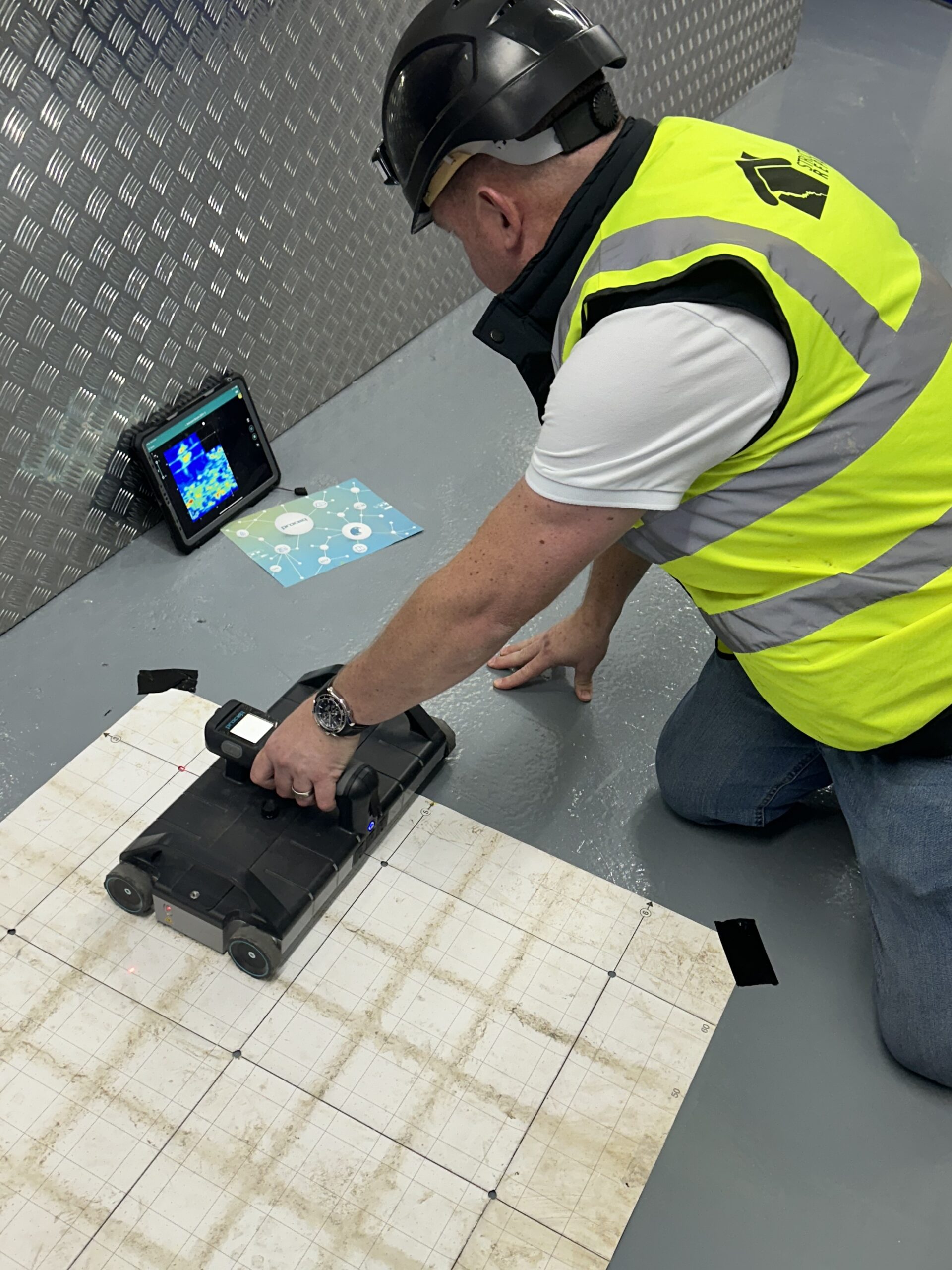Beyond the Surface Area: Leveraging Advanced Concrete Scanning Techniques for Unmatched Precision and Insight
Advanced concrete scanning methods have actually emerged as essential devices in this quest, offering a glimpse below the surface area to reveal a globe of vital insights. By harnessing innovative innovations, experts can reveal anomalies, assess the problem of concrete structures, and make educated choices that shape the program of projects.
Value of Advanced Concrete Scanning
The relevance of utilizing advanced concrete scanning methods hinges on the exceptional precision they offer for spotting sub-surface abnormalities and making certain architectural honesty. By using cutting-edge modern technologies such as ground-penetrating radar (GPR), electro-magnetic induction, and progressed sonar imaging, building and construction specialists can delve beneath the surface of concrete frameworks with a degree of accuracy that far exceeds traditional evaluation techniques. Concrete Scanning. These strategies enable the identification of concealed hazards like rebar rust, spaces, conduits, or post-tension cables that can endanger the stability and security of a framework over time
In addition, advanced concrete scanning supplies invaluable insights into the total condition of a concrete component without the requirement for invasive procedures, lessening the risk of causing damages during the analysis process. The capacity to determine the exact location and depth of potential problems enables targeted repairs and upkeep, eventually extending the life expectancy of the framework and enhancing its performance. Basically, the relevance of innovative concrete scanning can not be overstated in the realm of building and construction and infrastructure maintenance, where accuracy and integrity are critical.
Sorts Of Cutting-Edge Technologies

Anomalies and Issue Detection

In addition to GPR, concrete scanning techniques like thermography and impact-echo testing are also efficient in detecting problems and anomalies. By leveraging these advanced methods, professionals can proactively address structural issues, making description sure the long life and safety pop over here of concrete structures.
Assessing Concrete Problem
Just how can engineers precisely evaluate the condition of concrete frameworks to ensure their durability and safety and security? Various sophisticated concrete scanning strategies are used for this purpose. Ground-penetrating radar (GPR) is frequently made use of to evaluate the interior framework of concrete, spotting spaces, splits, and other anomalies that may endanger its strength.
Additionally, aesthetic inspection stays an essential component of concrete condition evaluation. Designers visually take a look at the surface for signs of degeneration, such as spalling, fracturing, or discoloration. Combining non-destructive screening methods with aesthetic examinations allows for a thorough evaluation of concrete condition, making it possible for designers to recognize possible issues beforehand and implement timely maintenance or fixings. By leveraging these sophisticated methods, designers can make sure the lasting sturdiness and security of concrete frameworks.
Enhancing Decision-Making Processes
In the world of facilities management, maximizing decision-making procedures is necessary for making sure the effective upkeep and long life of concrete structures. Enhanced decision-making procedures in concrete management entail using advanced scanning strategies to gather comprehensive information on the problem of structures. By leveraging modern technologies such as ground-penetrating radar and 3D imaging, stakeholders can make enlightened decisions pertaining to reinforcement, substitute, or repair service approaches.
These advanced scanning methods offer indispensable insights into the inner structure of concrete, identifying possible issues such as gaps, fractures, or corrosion that might not show up on the surface area. This level of comprehensive info permits aggressive maintenance preparation, lessening the threat of structural failures and boosting the total lifespan of concrete frameworks.
Furthermore, by integrating digital paperwork and evaluation devices right into the decision-making procedure, stakeholders can track the development of concrete problems gradually, making it possible for anticipating upkeep approaches and optimizing source appropriation. Ultimately, the integration of innovative concrete scanning strategies boosts decision-making procedures by giving unparalleled precision, understanding, and effectiveness in facilities administration.
Final Thought
To conclude, advanced concrete scanning techniques offer unrivaled accuracy and understanding in finding abnormalities, flaws, and evaluating the condition of concrete frameworks. By leveraging sophisticated modern technologies, decision-making processes can be enhanced, leading to even more efficient and enlightened options for maintaining and repairing concrete facilities. These methods play an essential function in guaranteeing the safety and long life of concrete structures, making them a crucial tool in the area of building and engineering.
Moreover, advanced concrete scanning gives very web link useful insights right into the general problem of a concrete aspect without the need for intrusive measures, decreasing the risk of creating damage throughout the assessment procedure - Concrete Scanning. Another cutting-edge technology is 3D X-ray scanning, which gives comprehensive photos of the internal framework of concrete, offering important details without the requirement for devastating testing. In Addition, Concrete Cover Meters are used to determine the density of concrete cover over reinforcement bars properly. Enhanced decision-making procedures in concrete management include using innovative scanning techniques to collect thorough data on the problem of structures.In final thought, progressed concrete scanning techniques provide unparalleled accuracy and understanding in detecting anomalies, flaws, and analyzing the condition of concrete structures